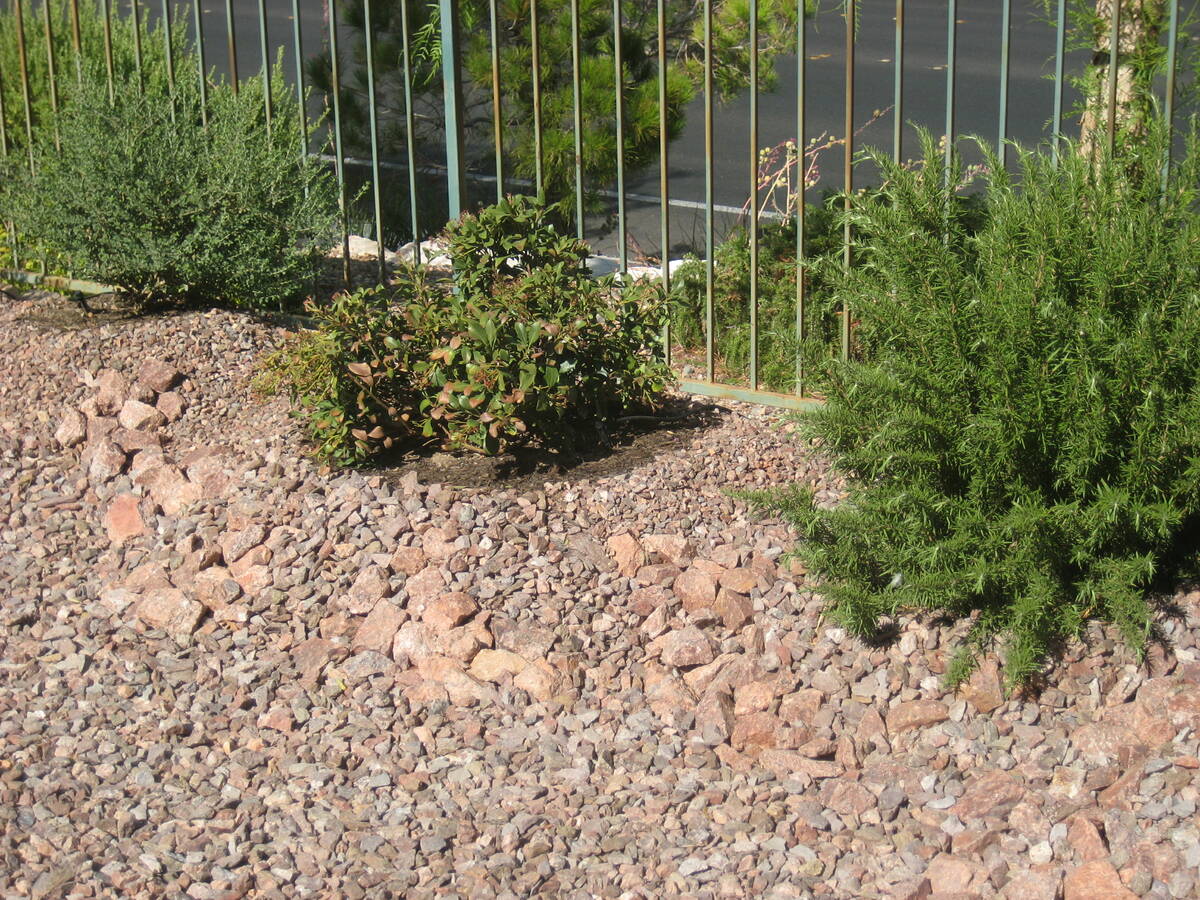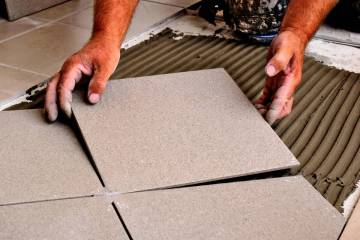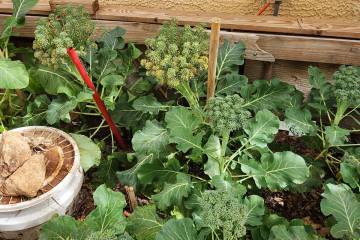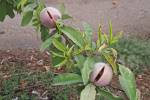Many different reasons for leaf drop
Q: Is this a fungal disease on my Indian hawthorn and how can I treat it? Any suggestions are welcome.
A: What you sent to me are pictures of some dead and dying leaves. They are hard to diagnose because they are symptoms of a disease.
You made the jump from a symptom to a sign because you saw plant leaves were dropping. Signs of plant disease are seeing the reason why the symptoms occurred in the first place. The reasons for leaf drop can be from many different signs.
Indian hawthorn is from the warmer parts of India and south China. It prefers soils with some organics in them and protection from hot landscape locations in the desert. Their leaves will scorch and burn up when planted in hot spots in the landscape, surrounded by rock and watered daily in the summer. It grows best when protected from the direct sun after 1 or 2 p.m., some soil amendments (compost) added after a few years of growth and watered less often to encourage deeper rooting.
What can you do? Make sure plants are well-fed. New plant growth is how the plant replaces diseased parts. The application of fertilizer can encourage new growth if it is not getting the fertilizer it needs.
Trees and shrubs are fertilized once a year, twice a year tops. There are exceptions. When flowering is frequent (roses come to mind) they are fertilized three to five times a year. Roses are fed more often because we expect repeat flowering.
Indian hawthorn flowers once. Your Indian hawthorn should be fertilized at least once a year in the spring, twice a year at the most. By the way, your shrub does well in the same landscape locations as roses.
A lack of water (no rainfall or low humidity) is the primary reason we see so few diseases in the desert. Fungal diseases are the most likely forms of plant disease when diseases do happen.
Secondly, plant diseases prefer high moisture in the desert air so they can spread from plant to plant.
Thirdly, plant diseases don’t happen very often here because it seldom rains, and the humidity of the air is low. But when plants flower, regardless of winter temperatures, are when plant diseases spread from plant to plant in the desert. The worst times for most plant diseases to occur are when air temperatures are hot, and humidity is low.
Air moisture, whether it comes in the form of rain when plants are disease-prone or from high humidity, can lead to disease. An example of disease-prone is rain and wind when plants are flowering.
Q: Our neighborhood yard inspectors sent us a notice that we have a “stressed tree” in our yard they want “restored.” It’s a Pink Dawn Chitalpa that’s been there for 22 years. Now that spring and warm weather have arrived, it’s sprouting bright new green leaves and will be full of blossoms before long. Do you think this is the issue they want corrected?
A: Have the tree deep fertilized, watered and pruned if needed and have them look again. Personally, I want the word “restored” clarified.
Chitalpa trees may be infected with a water-plugging (vascular) incurable disease like a disease found in grapes (Pierce’s disease) that does the same thing. An old Chitalpa may be around 20 years old. When the temperatures get hotter in early summer, these infested trees have trouble getting water to the leaves in some branches and these leaves may be scorched around the edges.
In advanced cases, these infected branches may lose the scorched leaves resulting in a general canopy thinning. The trees are infected by a small insect carrying a bacterial disease called a “sharpshooter.”
What to do? Give suspected trees enough water and make sure they get fertilized at least once a year in the early spring. There is no remedy for this bacterial plugging disease except tree removal.
If you think your tree is infected, have it removed. Once the tree is bitten, it is infested. It makes little sense to control the insects.
Q: As spring emerged, my photinia (grown to 8 feet or so since 2005) has all red leaves. As the red leaves are paling into light green with white flowers in between, the leaves are dropping like crazy — so easily I would say with just a wee wisp of wind in a kind of an “autumn-leaves” effect. If it’s sick, what’s the remedy?
A: Photinia prefer to grow in less alkaline soils. The presence of decomposing organics in the soil makes the soil less alkaline.
At some point, these decomposing organics run out and the soil slowly returns to a true desert soil with low organics and higher alkalinity. This is particularly true of soils covered in rock and not wood chips that can decompose and add acidity to the soil.
It can be normal for photinia to get pale leaves as new growth starts. Some plants go through a dilution effect as new growth begins.
As the season enters the beginning of summer these light-colored leaves should get a darker green. If they don’t, something is wrong. In this case, it is decreasing acidity.
Q: I’m concerned about my bottle trees, planted at the end of last year, in an area of the yard that is exceptionally windy. They have been getting hammered by the wind since getting planted. The trees have lost a tremendous number of leaves and I’m concerned they are not healthy. Each tree has five 2-gallon-per-hour emitters around each trunk. They are watered 15 minutes twice a day, three days a week in the summer. I cannot single out just the emitters to the trees for a separate watering cycle as that line is dedicated to all my backyard landscape.
A: All you can do now is hope that the trees develop a full canopy again quickly. You can encourage shade development by fertilizing with high nitrogen fertilizer (such as 21-0-0) at a rate of about 5 pounds of that fertilizer for each 1,000 square feet that is deep fertilized.
One thing you can do while keeping the irrigation system the same is put more drip emitters near the base of the tree. That will put more water closer to the tree and this water will go deeper without changing the minutes on the clock.
Bottle trees are the No. 1 tree that I get questions about probably because of their smooth bark when young. It is considered a lower-water-use tree but it is big, reaching about 60 feet when mature with a spreading canopy that size as well.
That means they should be planted no closer than about 40 to 45 feet apart to accommodate their size. Because of their size, they should be in parks, not home landscapes, in my opinion.
You have done the best you can with what you have. The first step toward saving water requires that the big trees are separated from the smaller plants by irrigating them differently. Now is the time to decide if the cost of redoing the irrigation system (separating the big plants from the smaller ones via the irrigation system) is worth it or not.
Q: Why pay extra for grafted plants? Outside of making fruit trees smaller (which you can do with dwarf trees and pruning), I don’t see advantages toward combining two plants into one except charging more.
A: There are lots of advantages when two plants are grafted together. If you are grafting a rootstock (another plant) because of the desirability contained in its roots, the top of the plant is irreversibly changed.
Yes, the fruit actually changes in taste (to some degree). Some of the changes include size (as you mentioned), disease resistance, hardiness to a climate or soil and earlier fruiting (precocity, as it is sometimes called). For farmers that can mean the difference of paying off their debts in a couple of years versus several years.
In ornamentals like ash trees, it is primarily a size issue. In fruit trees, it can be for many issues. Apple rootstocks, for instance, have a substantial influence on yield, fruit quality and profitability of a modern apple orchard.
A major trait that affects fruit quality is nutrient uptake and translocation to scions (the top part where desirable fruit is located) where, for example, a balance of potassium/calcium is important to reduce the disease of bitter pit in apples and corky spot in pears. Plant water use and response to drought are also affected since the roots of plants are the first to encounter a water shortage.
In my opinion, combinations of roots and scions (grafted trees) are well worth the extra dollar or two that you would pay.
Bob Morris is a horticulture expert and professor emeritus of the University of Nevada, Las Vegas. Visit his blog at xtremehorticulture.blogspot.com. Send questions to Extremehort@aol.com.





























